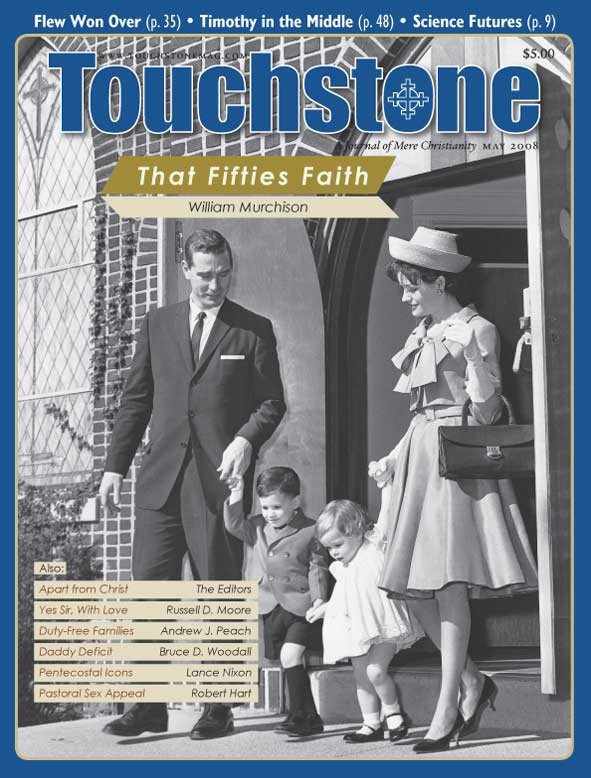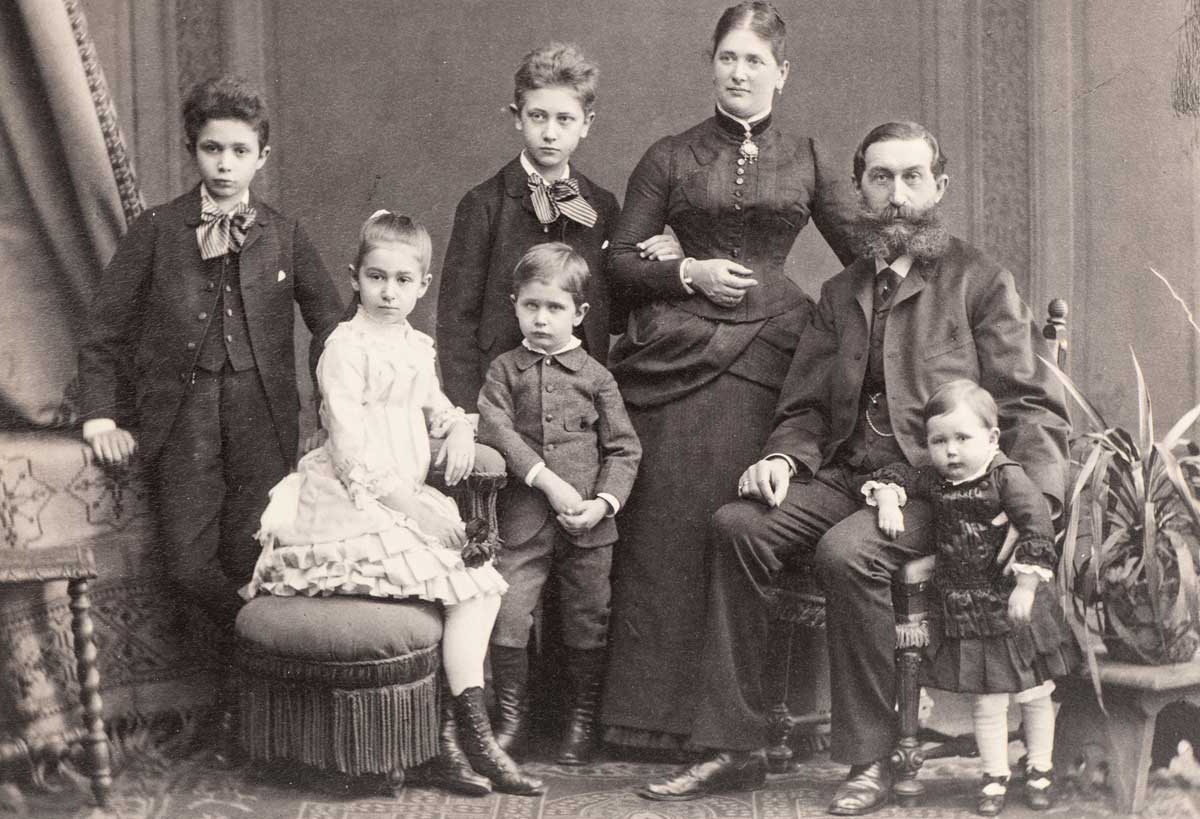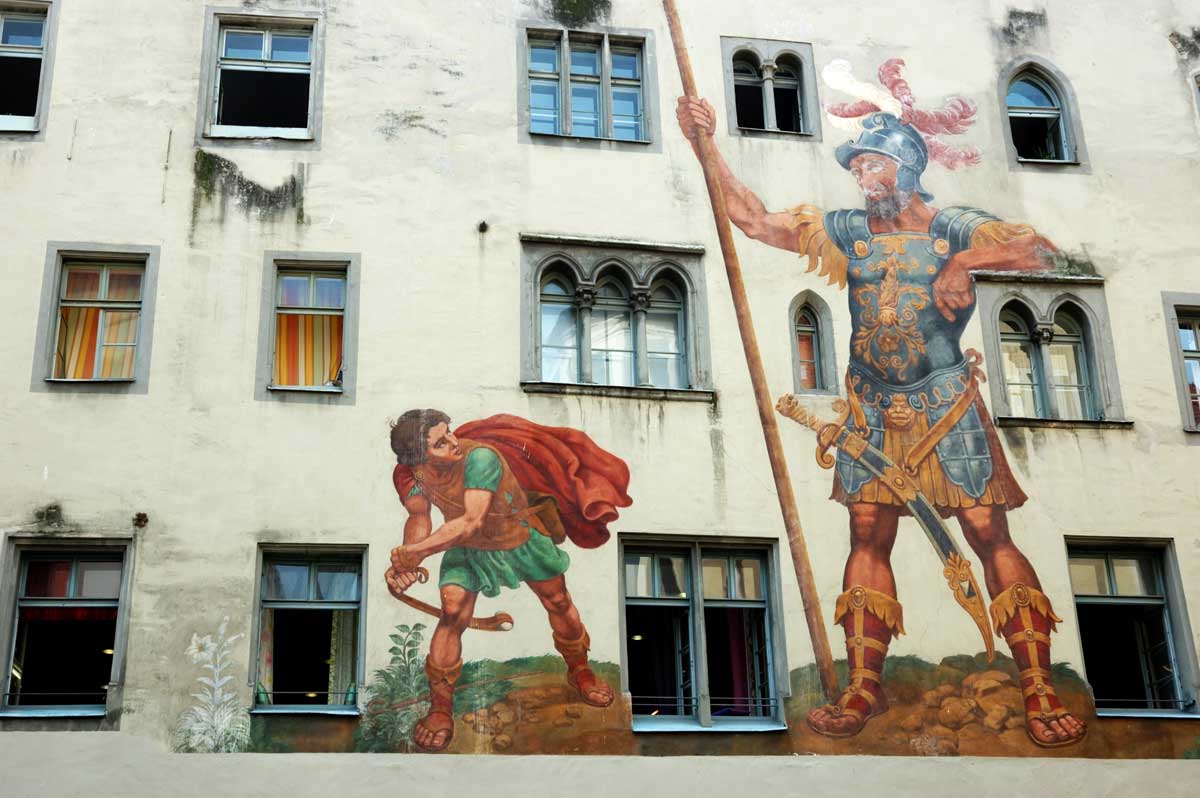Images of Redemption
Lance Nixon on Pentecostal Iconography
In West Bend, Iowa, a short walk from the motel room we’d rented, with its view of cornfields and white granaries, my wife and I and our children visited the Grotto of the Redemption. We followed a path that led us past the Stations of the Cross and other images arranged, in relatively simple mosaics and stonework, to focus the visitor’s mind on the message of Christianity.
How fitting that the Ruler of the Universe, born in a manger, should be celebrated amid Iowa corn and hog farms. There was a stark nobility about it that brought to mind how Thomas Merton, not yet a Roman Catholic convert, described the Byzantine imagery that impressed him in churches in Rome.
The imagery was “without pretentiousness, without fakery, and had nothing theatrical about it,” and “its solemnity was made all the more astounding by its simplicity—and by the obscurity of the places where it lay hid, and by its subservience to higher ends, architectural, liturgical and spiritual ends which I could not even begin to understand.” He could not avoid guessing at those ends, however,
since the nature of the mosaics themselves and their position and everything about them proclaimed it aloud. . . . For these mosaics and frescoes and all the ancient altars and thrones and sanctuaries were designed and built for the instruction of people who were not capable of immediately understanding anything higher.
Pentecostal Images
It was deeply moving, but for a Pentecostal like myself, also strange. I returned at the end of that vacation glad that I could appreciate the aesthetics of Catholicism, but also content that within my own tradition, we eschew the use of images. Or do we?
I’ve long felt that those who criticize the simplicity of Pentecostal worship choruses don’t understand that they function in just the way Thomas Merton described those Byzantine mosaics. They fill a clear liturgical need that progresses from praise into worship, in very simple terms and imagery that any blue-collar worker can understand.
But it occurred to me after our trip to the Grotto that we Pentecostals (and Evangelicals, too) do, in fact, use “real” images in worship. At least in many churches, they are there every Sunday in the pictures projected onto screens at the head of the church, along with the words to our choruses. We just don’t think of them as “images” or use that term for them.
These “motions” or “backgrounds” usually show people worshiping, the cross, or scenes of nature. Looking at one distributor’s website, I see one that shows a man skylined against a line of hills flooded by sunlight and another that shows a man bowed forward on his knees in prayer in a church with sunlight falling on him from a deep narrow window.
Others show a worshiper with his arms stretched wide in a t-shaped, crucifixion gesture against a sunset sky; a man with outstretched arms standing on a rocky shore pounded by the ocean; a woman at the edge of a meadow, her arms lifted in praise; a man with his arms spread wide against a backdrop of clouds. Another shows a congregation with hands lifted; another is simply an image of hands held open toward heaven; yet another shows a woman with her clothes billowing in the wind and her arms slightly behind her, bathed in sunlight.
Lance Nixon is a freelance writer based in Pierre, South Dakota, where he attends virtual services of New Life Assembly of God Church and also visits Trinity Episcopal Church virtually. He is also a fiction writer, and his latest stories about the Great Plains appeared in the November 2020 and November 2019 issues of Gray's Sporting Journal.
bulk subscriptions
Order Touchstone subscriptions in bulk and save $10 per sub! Each subscription includes 6 issues of Touchstone plus full online access to touchstonemag.com—including archives, videos, and pdf downloads of recent issues for only $29.95 each! Great for churches or study groups.
Transactions will be processed on a secure server.
more from the online archives
calling all readers
Please Donate
"There are magazines worth reading but few worth saving . . . Touchstone is just such a magazine."
—Alice von Hildebrand
"Here we do not concede one square millimeter of territory to falsehood, folly, contemporary sentimentality, or fashion. We speak the truth, and let God be our judge. . . . Touchstone is the one committedly Christian conservative journal."
—Anthony Esolen, Touchstone senior editor











